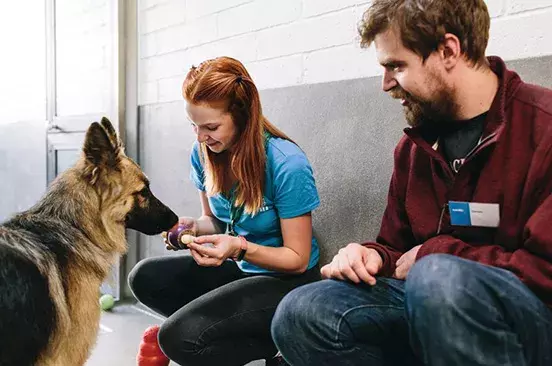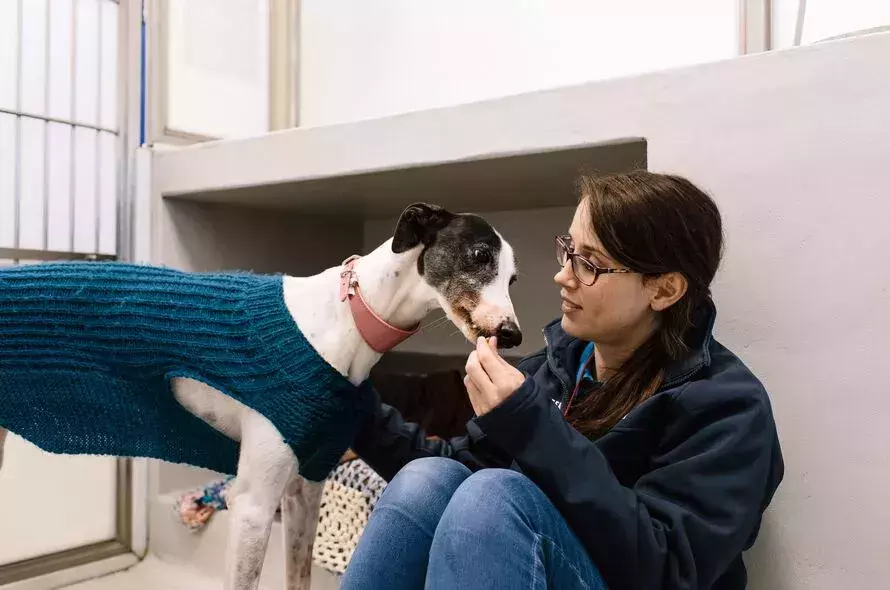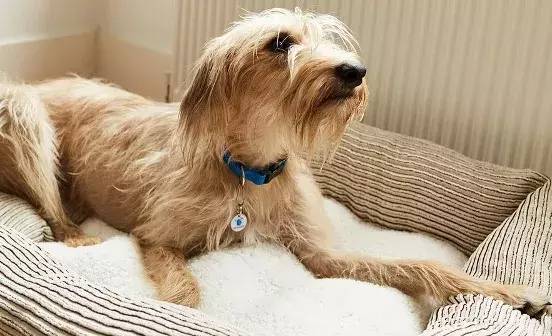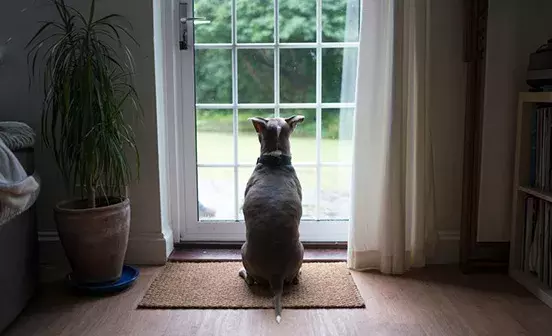Training your dog is great fun but there are a few things to consider before you start to in order to make sure you are giving your dog the best possible chance of succeeding.
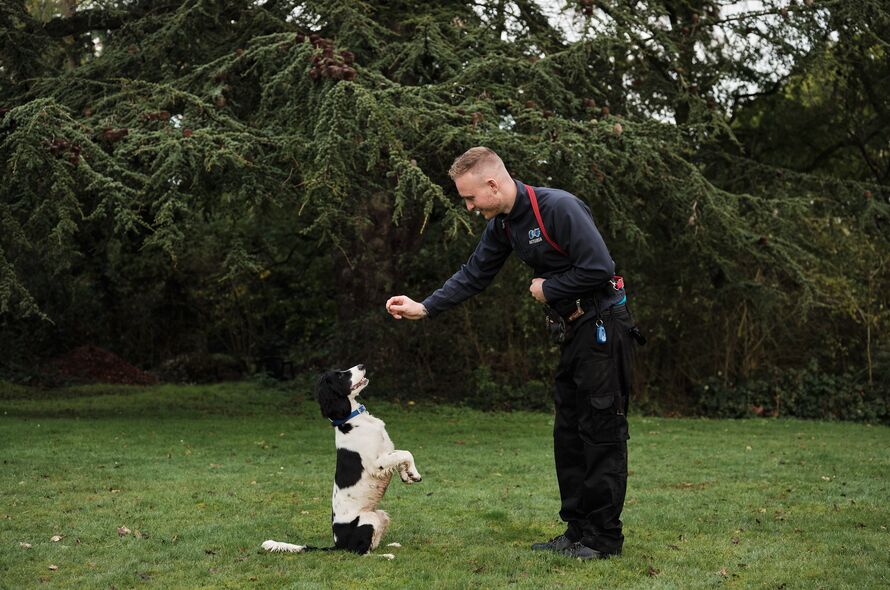
The environment, or the place where you train your dog in will have a huge impact on how they learn and the techniques you will need to use.
Here are some factors to take into account about the place where you choose, or are able to train your dog.
SIZE OF THE SPACE
Is the area you’re using big enough for you dog to wander around and move away from you if needed? Also, is it big enough for the behaviour you’re trying to teach? For example, if you’re getting your dog comfortable with walking on a long-line lead you will eventually need to be in a space which allows them to move towards the end of the lead further away from you.
CONDITIONS FOR YOUR DOG
Does your dog have access to water in this space? Training is thirsty work and hydration is key to keeping your dog's brain active and ready to learn. Equally, what is the temperature like? If your dog is too hot or too cold this could affect their concentration or even their wellbeing. Make sure that your training area is well-ventilated, so your dog doesn’t overheat.
TRY TO REMOVE DISTRACTIONS
When training any behaviour for the first time it is vital that your training space is away from distractions. The aim is to increase the number of distractions gradually as the behaviour becomes more instinctive.
An entirely blank space isn’t possible for most people, but it’s a good idea to move things like favourite toys out of the area, turn off TVs and radios and ask other family members to keep noise and movement to a minimum at least to begin with. Equally, if this is a new space outside of the home, it’s a good idea to give your dog chance to sniff around and explore before you start any training. This will allow them to satisfy any curiosity about new sights and smells and should mean they can then focus better on you and the task in hand.
TAKE PLENTY OF BREAKS
Learning is hard work and dogs can have a very short attention span. Having a separate calm, quiet area, away from where you are training, gives your dog the option to have a time out and then return when they are ready to continue.
BE PREPARED
It’s a good idea to think of training time as a structured activity for both you and your dog. Life happens but leaving to get more treats or to answer the phone for example will distract your dog and you will likely lose their focus. You may even miss the chance to reward some great behaviour that you have been working towards. Make sure that you are also prepared and have set aside some time to spend solely training with your dog.
Before you start, have a look around the space and make sure you have everything you need:
- Treats (for rewarding good behaviour)
- Clicker if you use one (to mark the behaviour you want)
- Toys (to offer during a break)
- Timer (to measure how long your dog can concentrate for)
- Specific equipment (for example a muzzle or a crate if this is what you are training)
- Distractions have been removed (to allow your dog to focus)
HOW TO TRAIN YOUR DOG
Once you have set up your training environment it is time to think about exactly what you want to train your dog to do. Once you know the end result, or ideal behaviour, break it down into smaller steps so that your dog can go through the process and work out exactly what you are asking. Most, if not all dogs know how to sit but they do not know what the word “sit” means, so design your training in a way that breaks it down step by step.
Below is an example of how to break training into bite sized chunks for your dog. These steps will be the beginnings of how to get your dog comfortably wearing a muzzle:
Step one - Put muzzle on the floor, when the dog voluntarily approaches the muzzle, click with a clicker, and reward the dog
Step two - Place the muzzle between your knees, on your lap or in your hand. When the dog touches the muzzle with its nose, click and reward
Step Three - Rest a piece of food at the opening of the muzzle, click when the dog takes the food
Once your dog has the hang of step one and can repeat the step five times in row you can move onto step two. If you find that your dog is struggling to move onto the next step and fails three or more times, go back to the step before or try to make the next step easier for them to achieve.
We use this method of breaking down training with all our dogs at Battersea. Some dogs go through steps quickly, while others take more time; all dogs are different. This training is best written down so that you know which stage, or step your dog is at and you can then take breaks and carry on from where you left off. See the example below.
Now you know how to set up your training environment and to start breaking down behaviours into bite-size chunks. We have lots of advice on training your dog with different tricks and behaviours on the Pet Advice section of the Battersea website, and our YouTube channel.
Download this guidance as a handy advice sheet and use it to train regularly:
